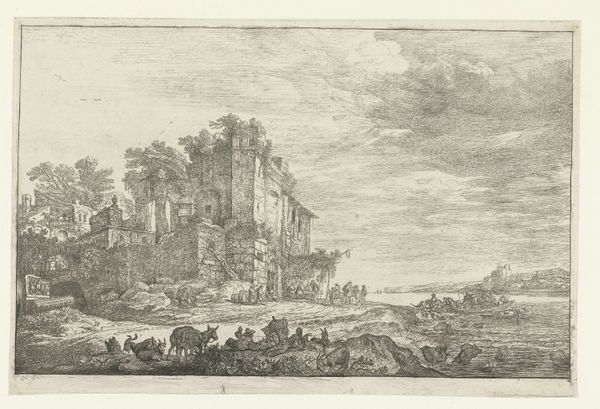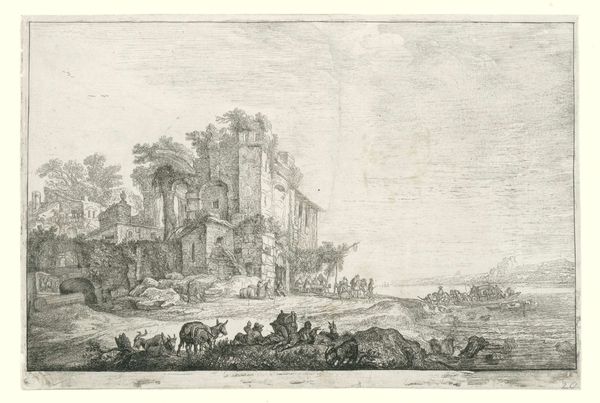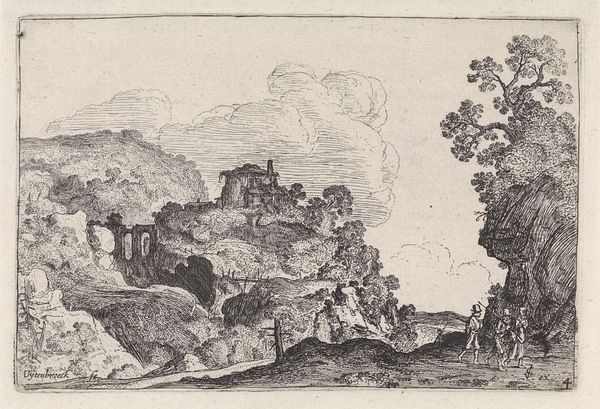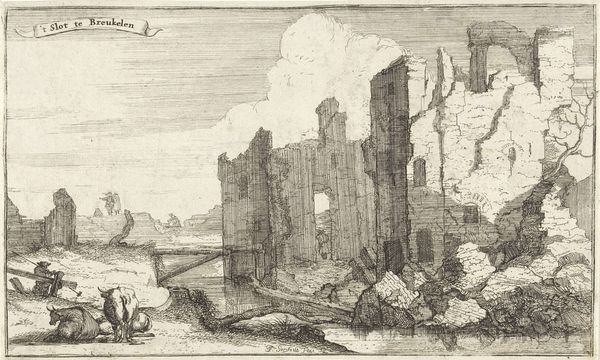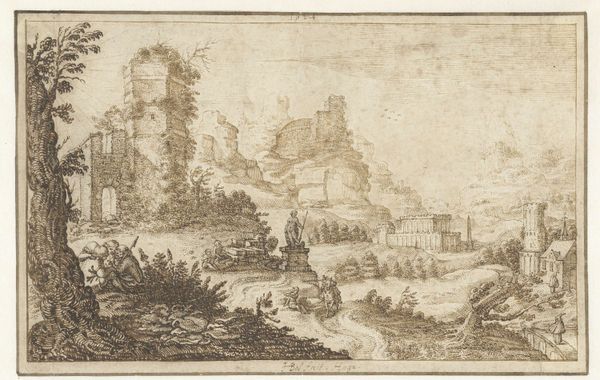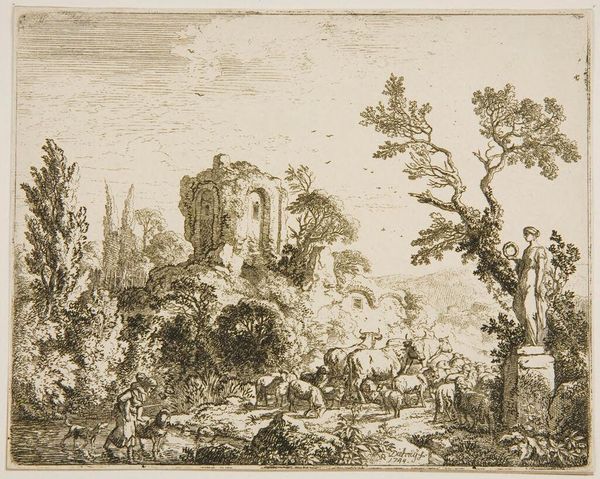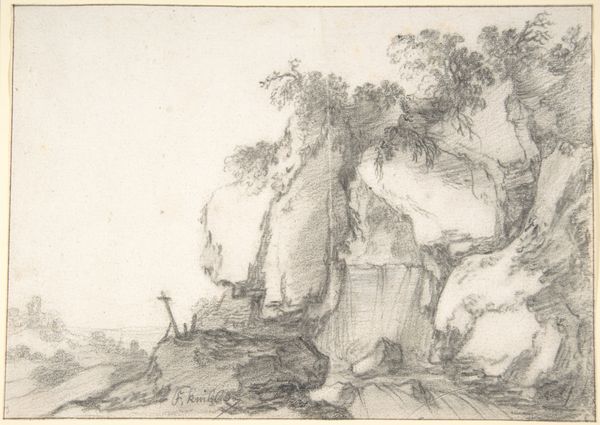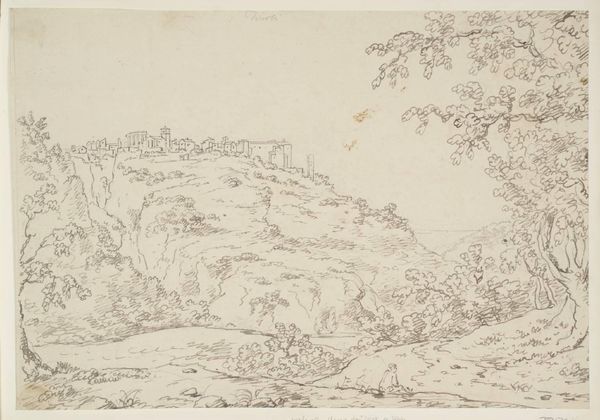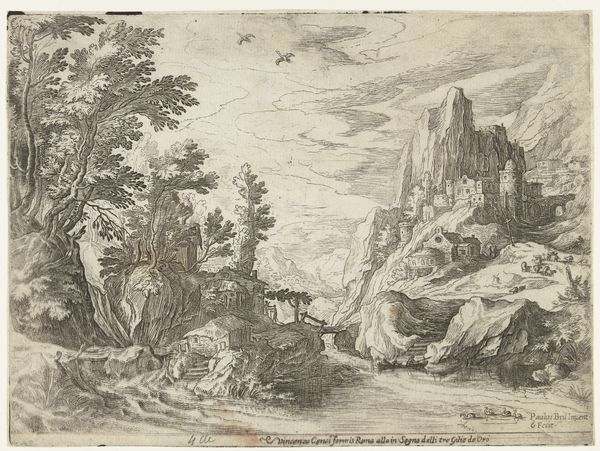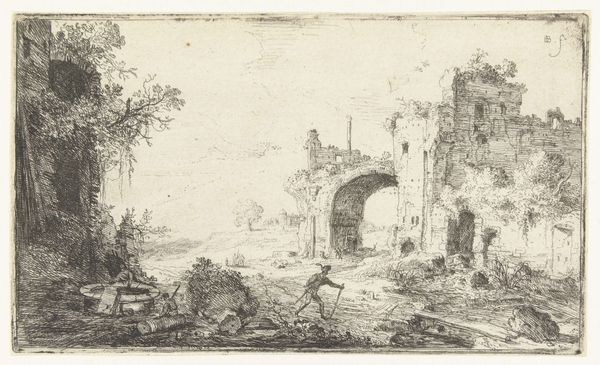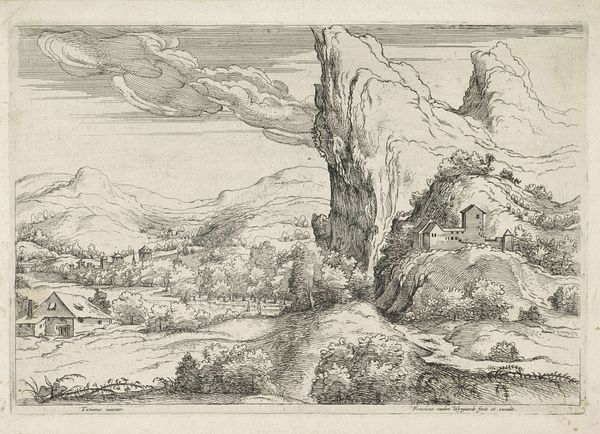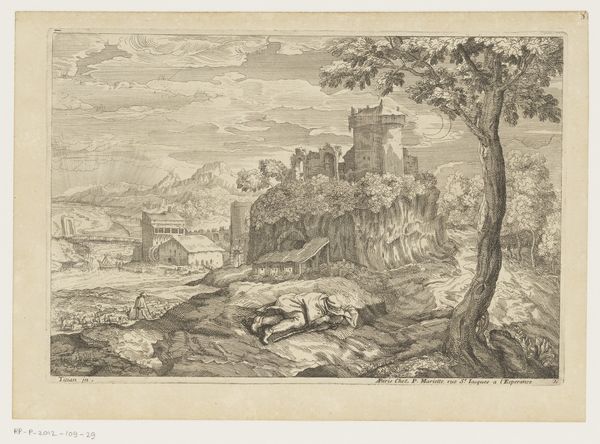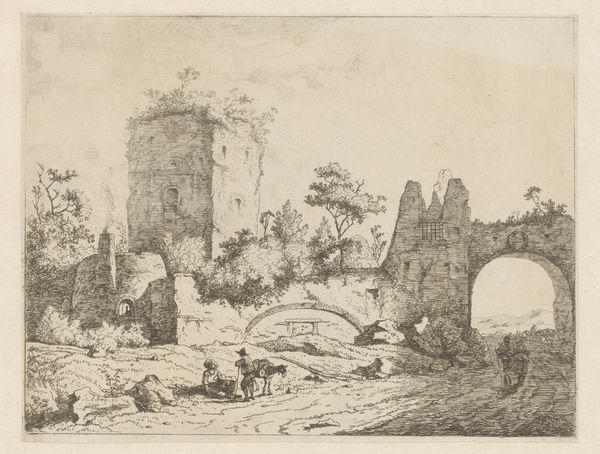
drawing, etching, pencil
#
drawing
#
etching
#
landscape
#
pencil
#
history-painting
#
realism
Dimensions: height 126 mm, width 187 mm
Copyright: Rijks Museum: Open Domain
Curator: Adam Pijnacker's "Italian Landscape with Ruins and Some Figures," likely created sometime between 1632 and 1673, is rendered in pencil and etching. Editor: Immediately, I notice the mood: quiet and reflective. The soft grey tones lend the scene an almost dreamlike quality. Curator: Consider the layering here. Pijnacker uses pencil to suggest textures - the rough stone, the soft foliage, the way the light hits different surfaces. The etching work gives us definition and sharper lines that almost cut through the softness, offering structure. Editor: This reminds us how labor and craft went into romantic landscape imagery that could naturalize a certain vision of history. Think about whose stories get foregrounded through ruin paintings versus what gets left out. Curator: That's an important point. Pijnacker likely did this drawing as part of a study of landscape elements. His production depended on existing economic systems: Italian landscapes were in high demand at this time in Northern Europe. Editor: True, and we shouldn't dismiss that tension. Ruins here aren't just pretty, they signal an invitation to probe layers of civilization, power dynamics embedded in stone and sketched into the scene. How can this etching challenge those viewers in its portrayal? Curator: Pijnacker’s delicate touch contrasts the massiveness of these ancient ruins. Through skilled use of the materials, he presents history itself as layered and delicate. Editor: Ultimately, this image invites us to reflect not only on Italy's past, but also on the dynamics of seeing and understanding what it represented to people then—and even now. Curator: It really highlights how skill can make something look very subtle but really invites that depth of contemplation you brought up. Editor: Absolutely. By attending to the historical setting, labor, and imagery this print urges important lines of questioning around culture and time.
Comments
No comments
Be the first to comment and join the conversation on the ultimate creative platform.
